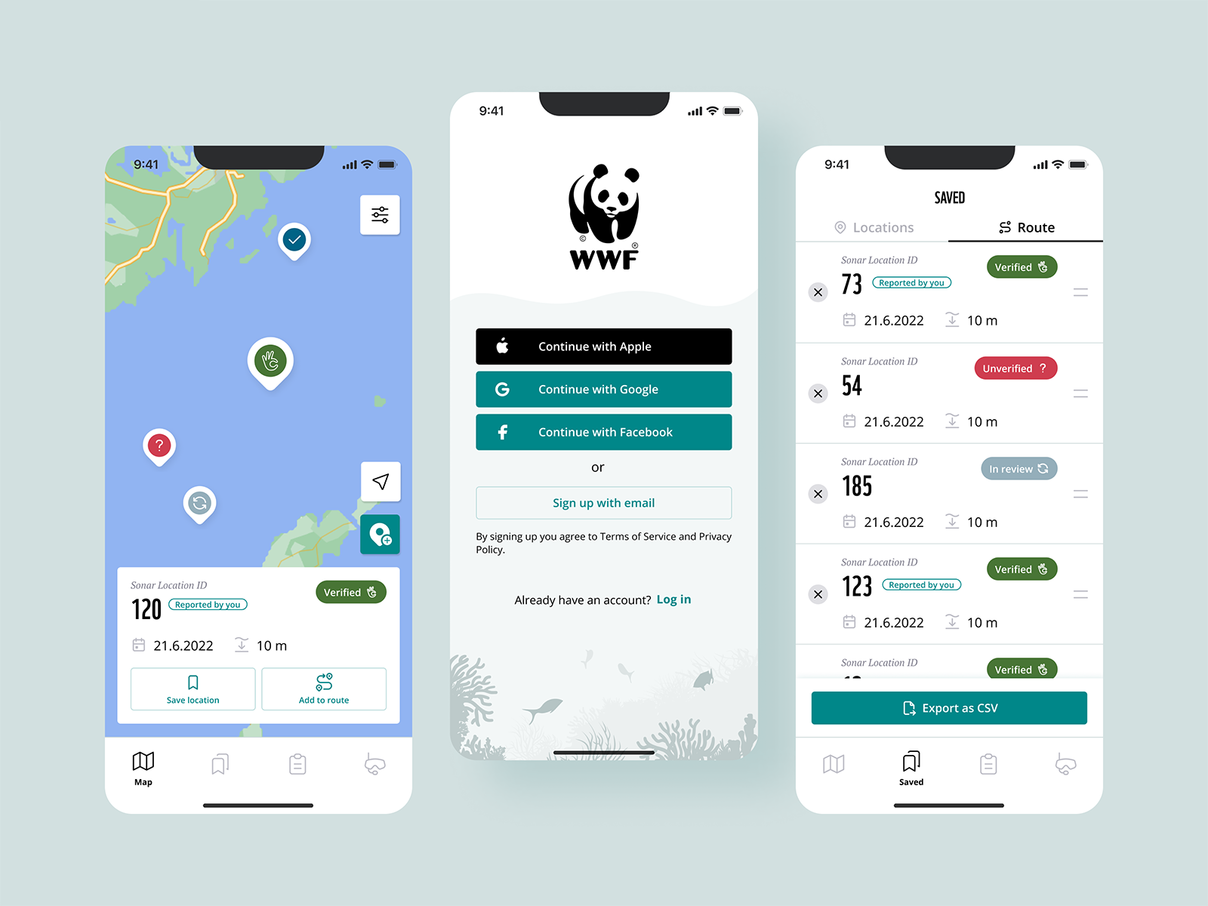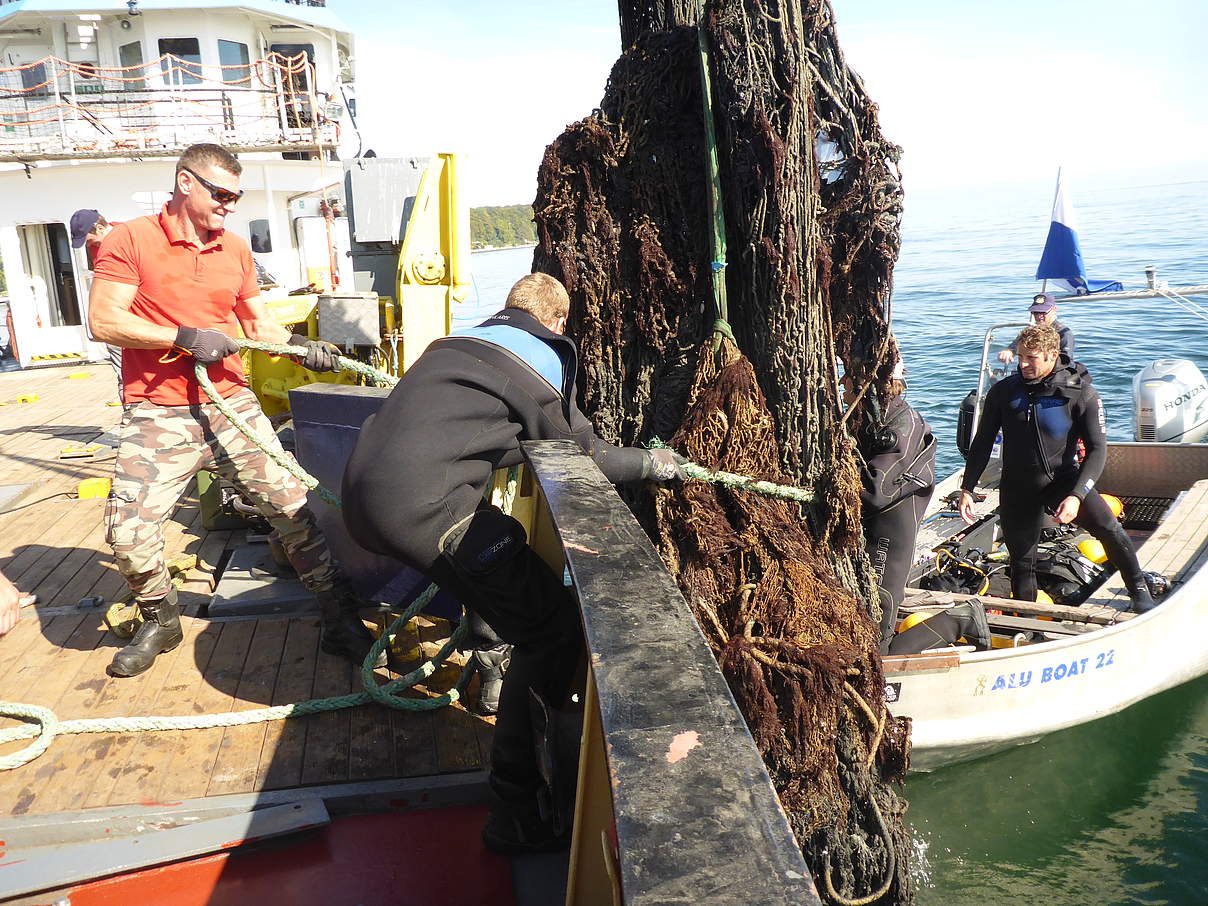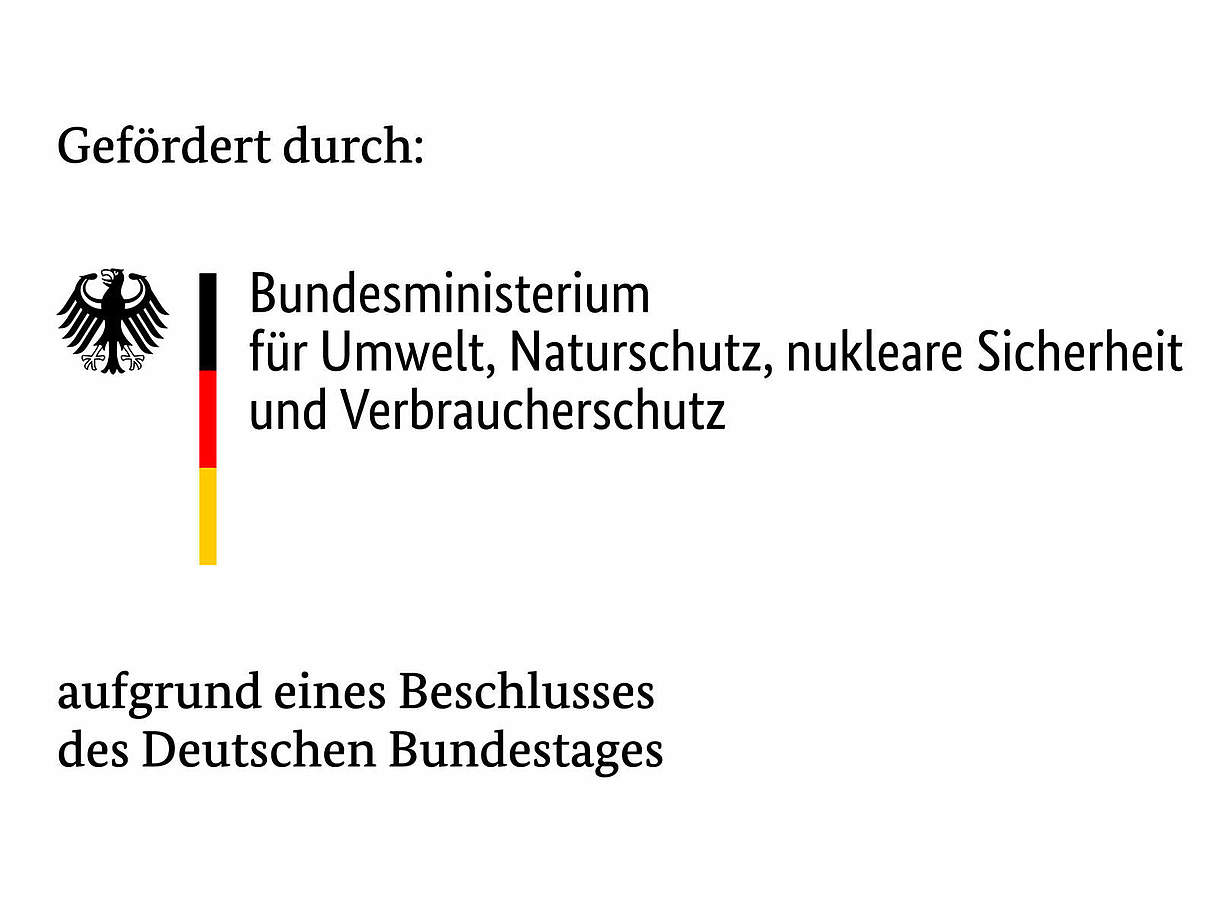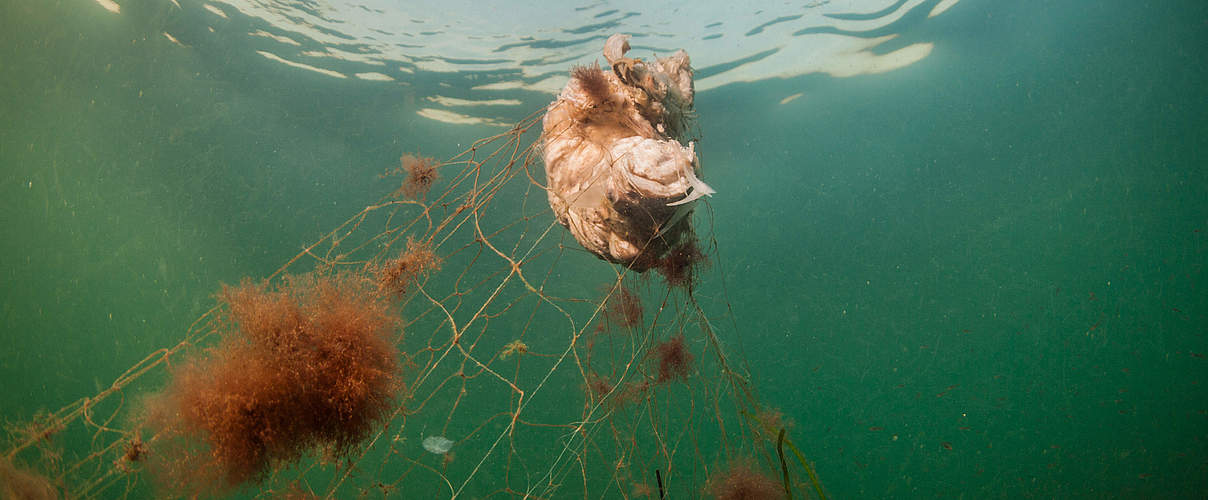With the help of the GhostDiver App, divers can now, for the first time, participate in the preparation of ghost net recovery events. The divers can document the situation under water and check whether a reported object is really a ghost net.
Technology helps: Tracking ghost nets with sonar images of the seafloor and the GhostDiver App

To make the search for ghost nets more efficient, WWF has been working with sonar expert Crayton Fenn of Fenn Enterprises from the USA since 2018, who searches for and recovers lost fishing gear in the United States. Thanks to extensive training, searching via sonar has become the most successful method of detecting ghost nets. Sonar can be used to scan strips up to 100 meters wide, thereby allowing larger areas to be searched for ghost nets than without sonar. Using sonar technology, WWF has been able to recover 20 tons of ghost nets since 2019, and dispose of them.
Because the data from the seafloor are generated with sound waves, low visibility, which is common in the Baltic Sea, is not a problem. Those locations, where a suspected object has been identified on the sonar images, can now be viewed, documented and verified by divers using the GhostDiver App.
WWF's goal is to ensure that finds verified via the GhostDiver App are regularly recovered by government institutions. The reason being – on the one hand – that the recovery of ghost nets is difficult and dangerous. On the other hand, this is a socio-political task that must not and should not rest on the shoulders of volunteers and NGOs.
There are already government programs in WWF project areas, including the state project in Mecklenburg-Western Pomerania. This project aims, for example, to identify ways in which regulated retrieval of inherited liabilities and lost fishing gear should take place, in cooperation with fisheries and the responsible state offices. Nevertheless, search and recovery operations organized by the fisheries inspectorate already exist, for example in Estonia. For all actions applies, however, the better and more precisely prepared the positions of the ghost nets are, the more efficiently and financially economical the recovery can be carried out.
What are ghost nets and what problems do ghost nets create?

Ghost nets are described as ownerless fishing nets. They “ghost” through the sea where they become a danger to marine life, because they continue to fish endlessly. Alongside fish, ghost nets also turn into traps for seals, whales, sea turtles and diving birds when chasing after fish which seek shelter in wrecks or small “plastic islands”. Diving birds and marine mammals entangle themselves in the nets or get trapped underneath them and can no longer find their way to the surface to breathe.
Also, nets lying on the seabed harbour dangers: they slowly dissolve into tiny plastic fibers and thus contribute to the microplastic pollution of the oceans. There are many reasons why nets are lost: nets are torn loose during storms, ice conditions or boat accidents, or they are illegally disposed of at sea. No matter why they get into the sea, all ghost nets have one thing in common: it is almost impossible to find them in the sea without knowing their exact position.
The littering of the oceans with plastic is an immense problem. The exact quantities of how many nets end up in the seas every year are not known. About 10 percent of marine plastic washed upon European beaches consists of ghost nets and lost fishing gear (FAO 2009). According to the Alfred Wegener Institute's plastics database (litterbase.org), worldwide studies find about a quarter of plastic and fisheries nets in the ocean’s water column. At the surface of the Pacific “litter vortex”, it nearly reaches half (The Ocean Cleanup 2018). It is estimated that between 5,000 and 10,000 pieces of net are lost every year in the Baltic Sea alone (WWF Poland 2011).
EURENI Project

Since January 2021, the German Federal Ministry for the Environment, Nature Conservation, Nuclear Safety and Consumer Protection (BMUV) has been funding the WWF project for inner-European knowledge transfer and exchange on the topic of sonar technology and the GhostDiver App through the EURopean ENvironment Initiative (EURENI).
As part of the project, WWF is testing for the first time the sonar method and the involvement of divers in the search for ghost nets in Poland, Estonia and France. Here, WWF is working closely with WWF Poland, KEST (Keep Estonian Seas Tidy) and WWF France, in order to learn about the respective regional characteristics such as currents, fishing gear etc., and to be able to identify specific requirements for the technique for recovery.
In each partner country, five sonar days and two verification dive days will be conducted with regional divers at the most promising positions - on the one hand to increase the knowledge of ghost net positions in European seas, and on the other hand to communicate solutions also to governmental bodies.
